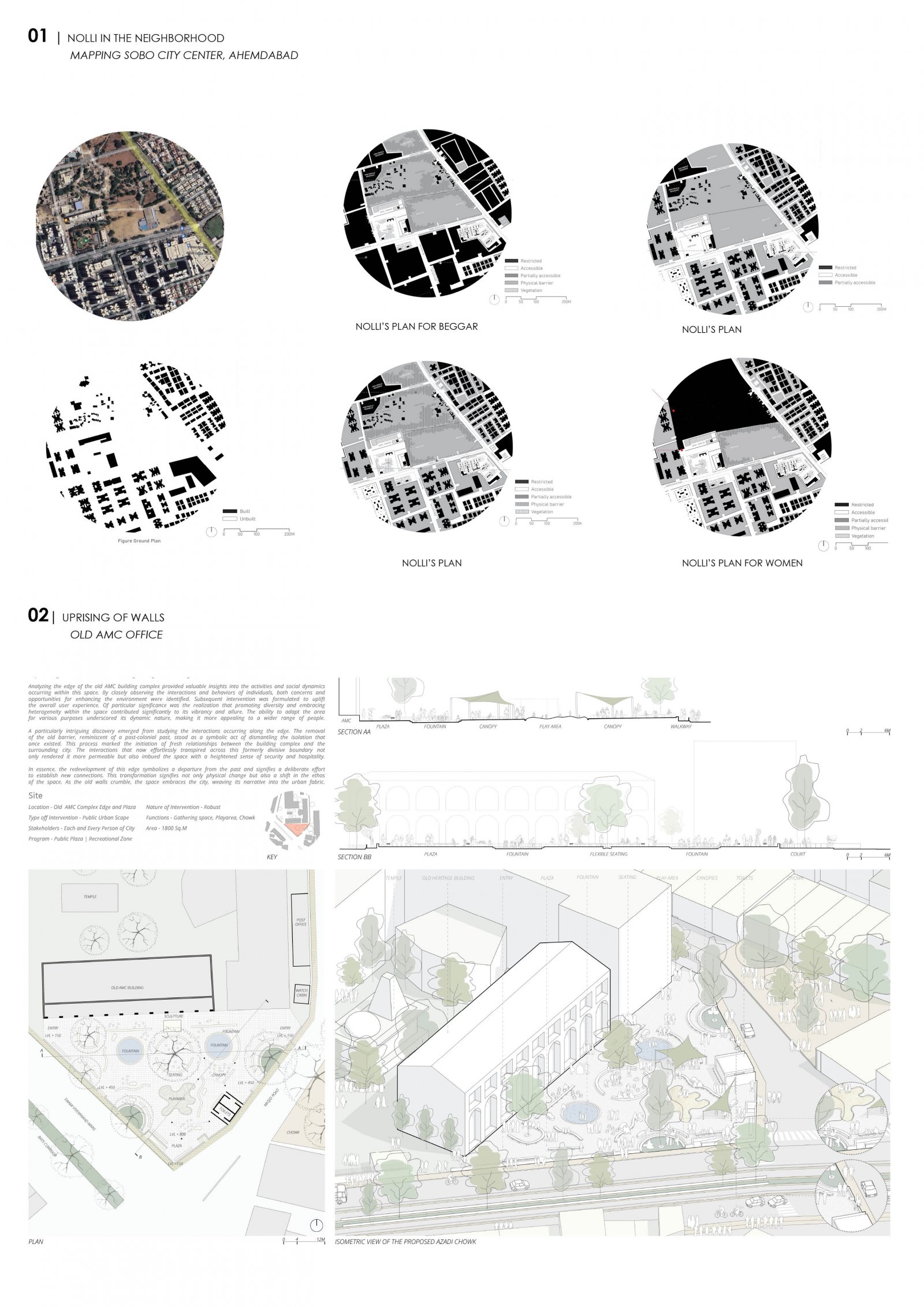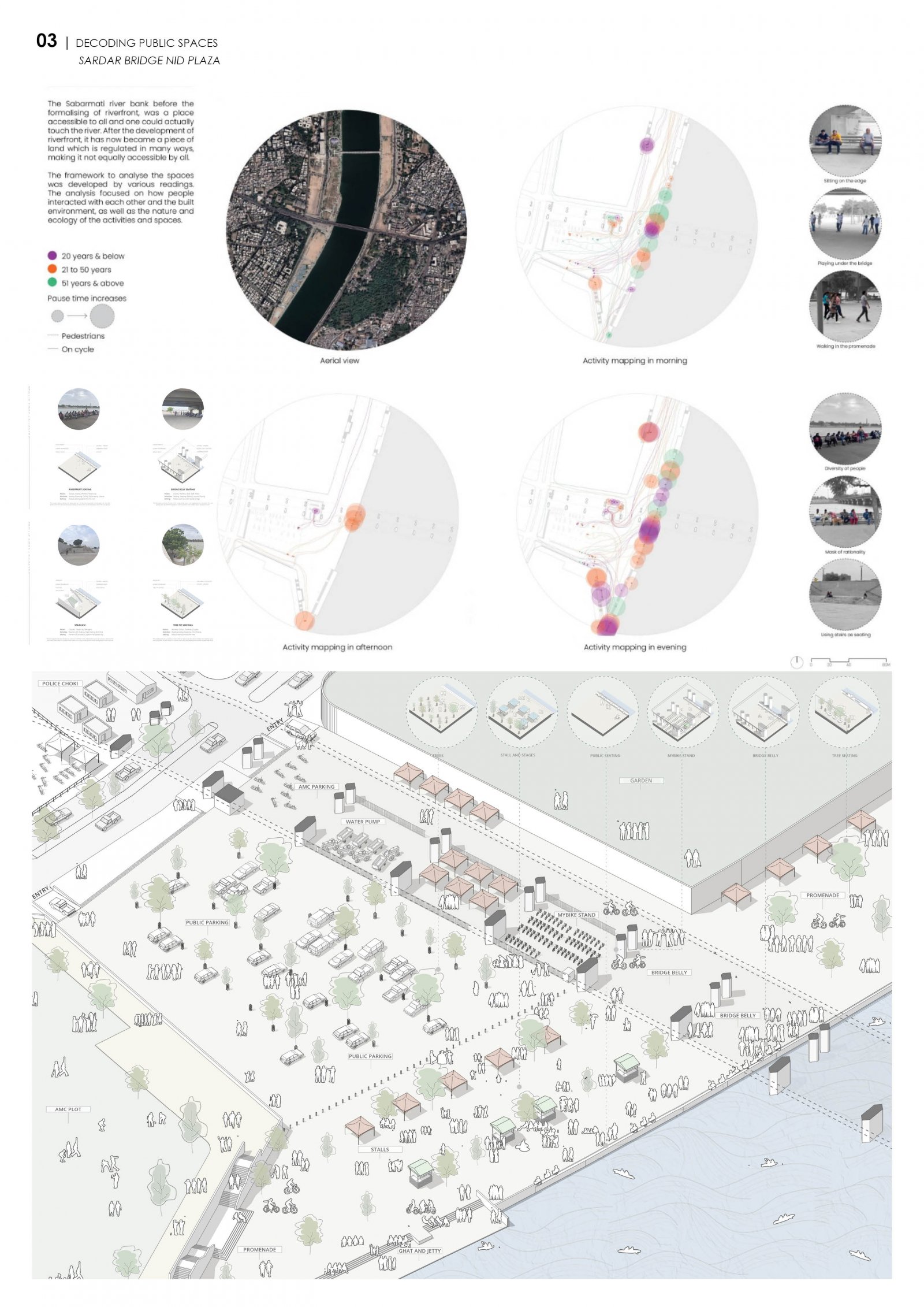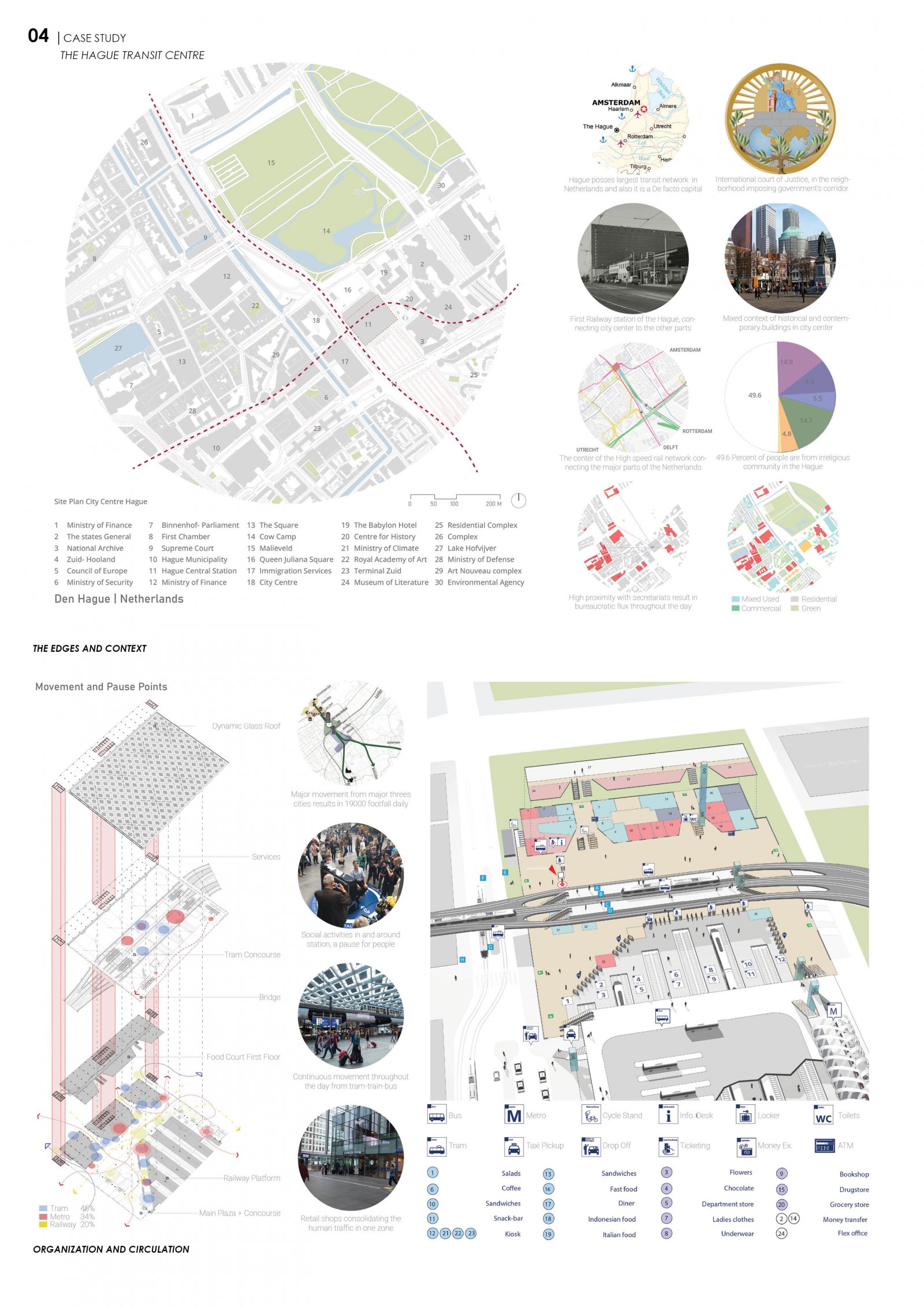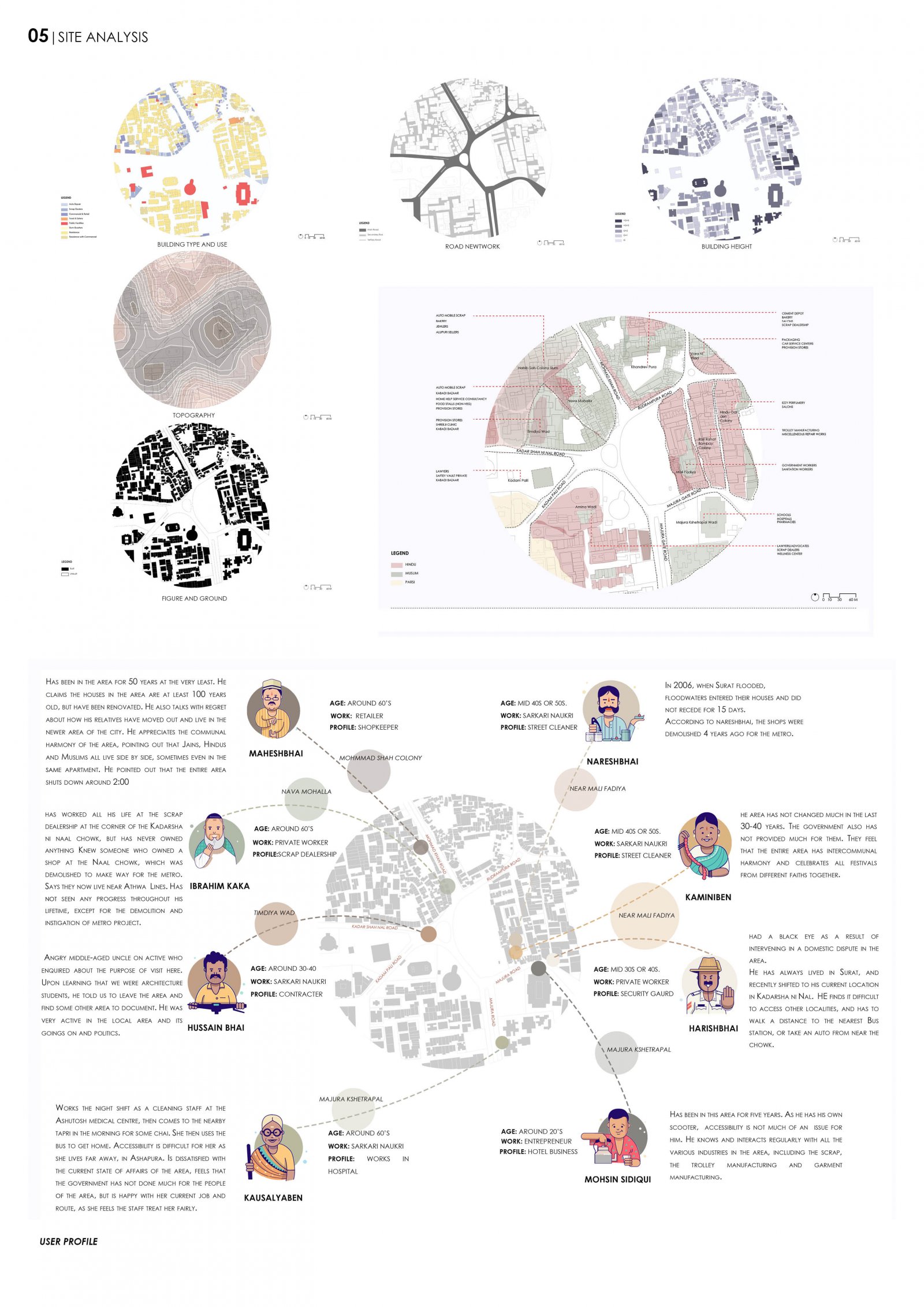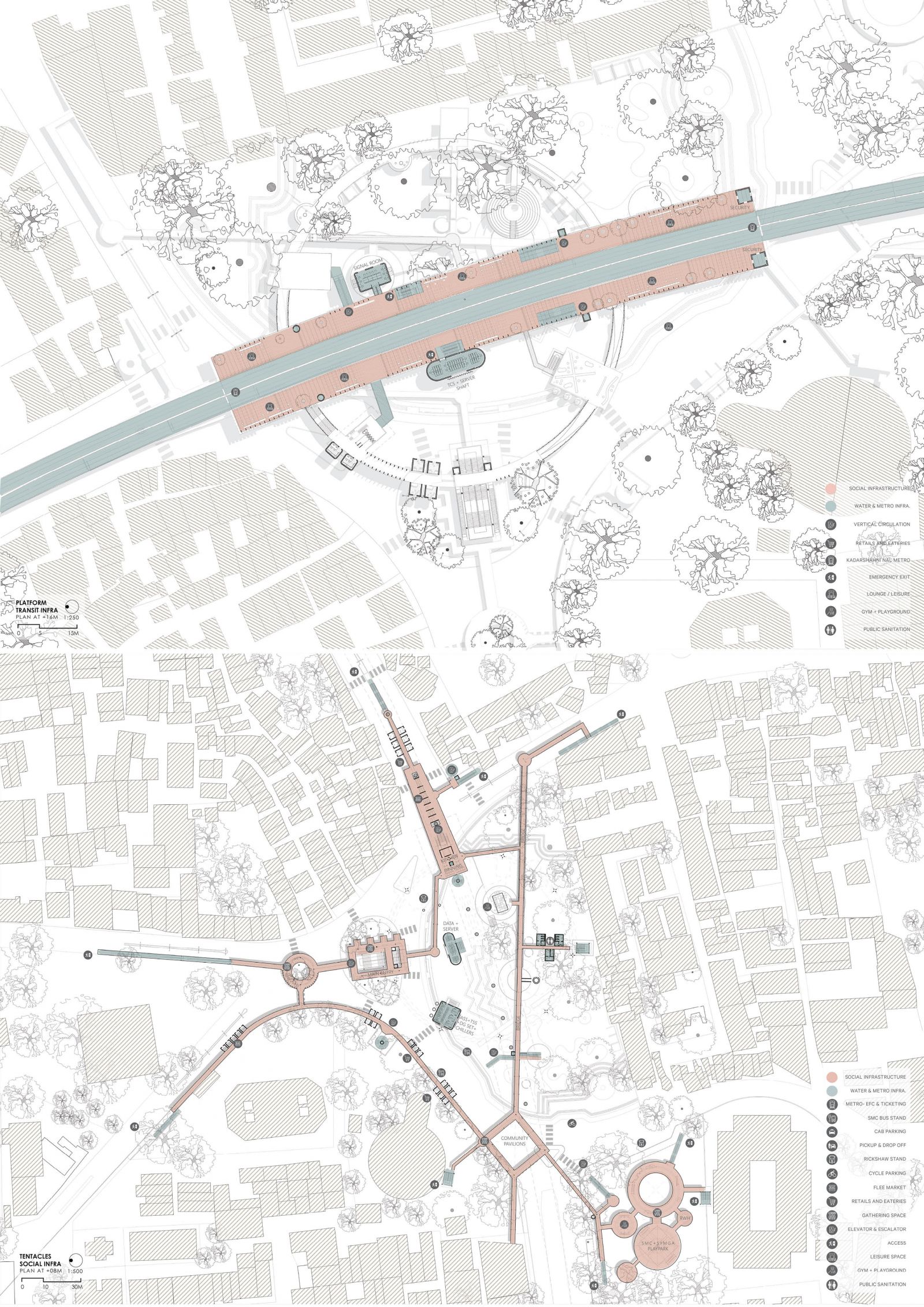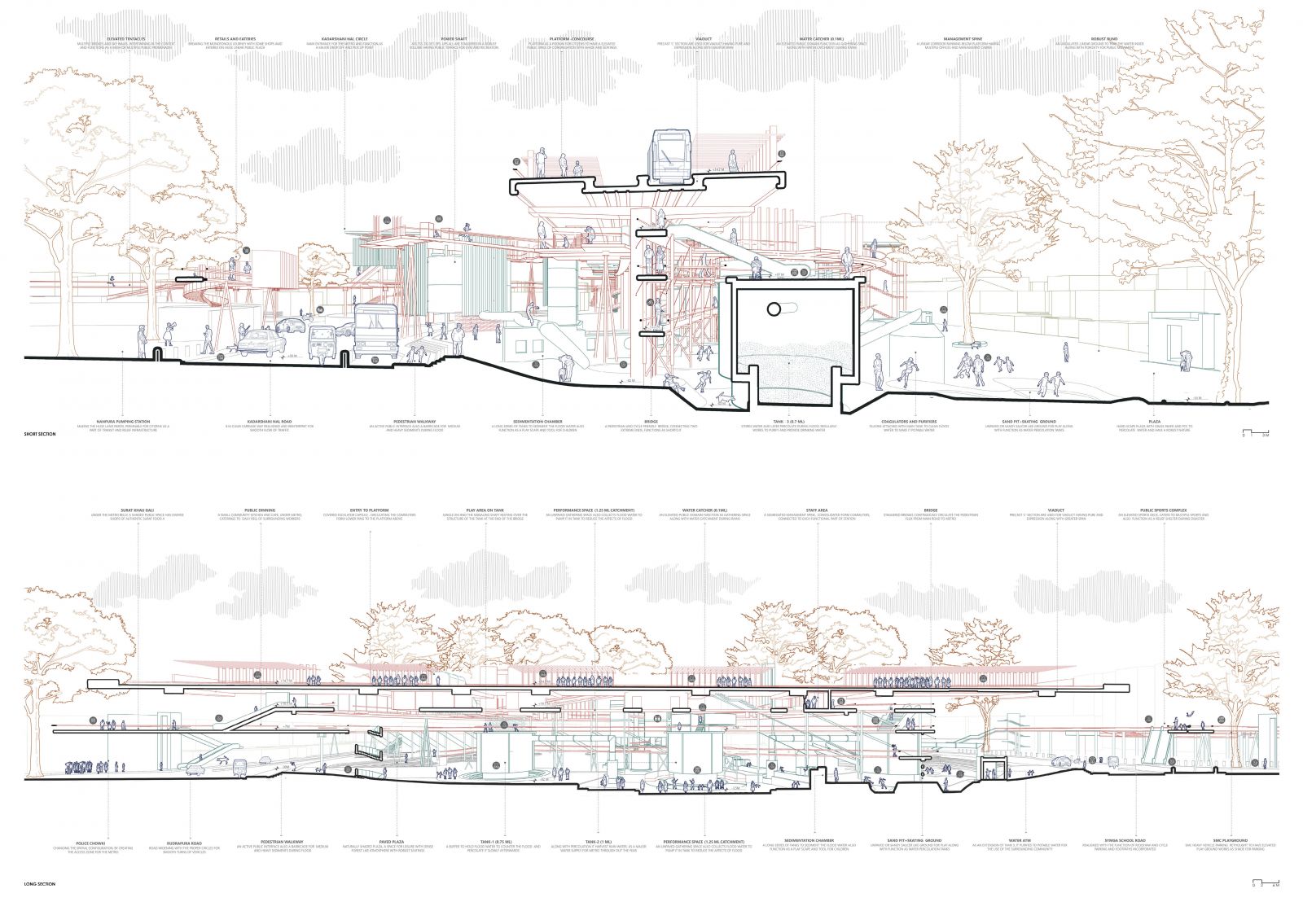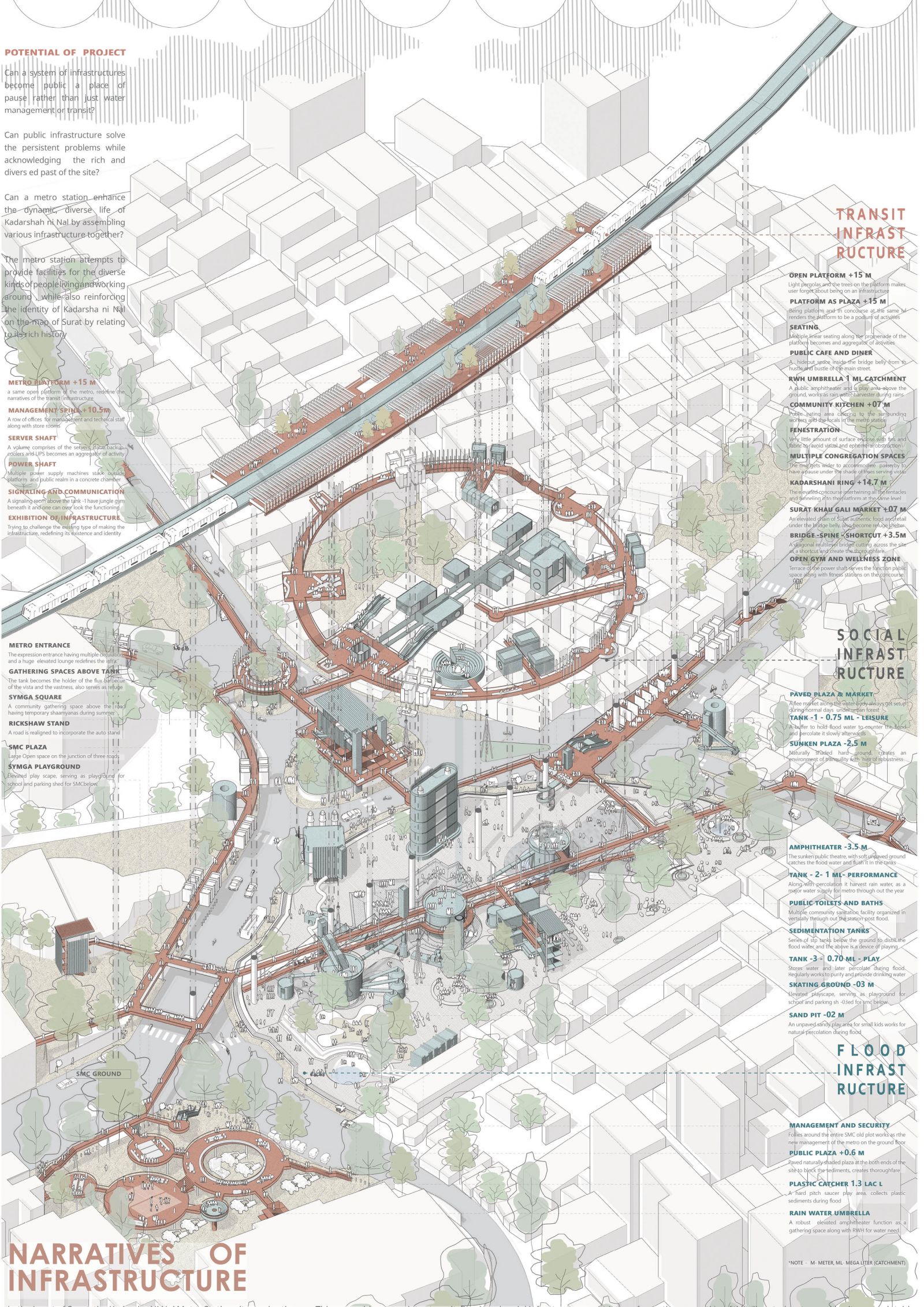Your browser is out-of-date!
For a richer surfing experience on our website, please update your browser. Update my browser now!
For a richer surfing experience on our website, please update your browser. Update my browser now!
In the heart of Surat, the Kadarsha Ni Nal Metro Station site carries the weight of temporal events—floods, riots, plague, and fire. These historic occurrences have left enduring imprints, creating a void in both minds and the city, fostering isolation within the urban fabric. The introduction of the metro, while new infrastructure, seems disconnected from locals’ ongoing issues.
To address this isolation, a clear solution is proposed: the birth of an Antivoid. This space aims to be universally relatable, offering a haven for all stakeholders.
This new void encapsulates transit, flood, and social infrastructure, inspired by the current context and past imprints. The Antivoid becomes a shared zone, bridging voids and creating a portal to reunite communities, fostering social empowerment by embracing diverse identities.
The approach is pragmatic and decentralized, intertwining the city’s three major infrastructures—transit, flood, and social—addressing issues like floods and sanitation.
It transforms the perception of the alienated metro, making it more relatable. The Anti Void strategy challenges the idea of ‘type’ of the infrastructure. This integrated infrastructures serves as a social generator, solving problems for the community by reshaping the present for the greater good. This is a direct commitment to revitalizing the city through a decentralized approach, aiming to bring back rich and diverse values, placing Kadarsha Ki Nal on the map of Surat as a thriving community.
